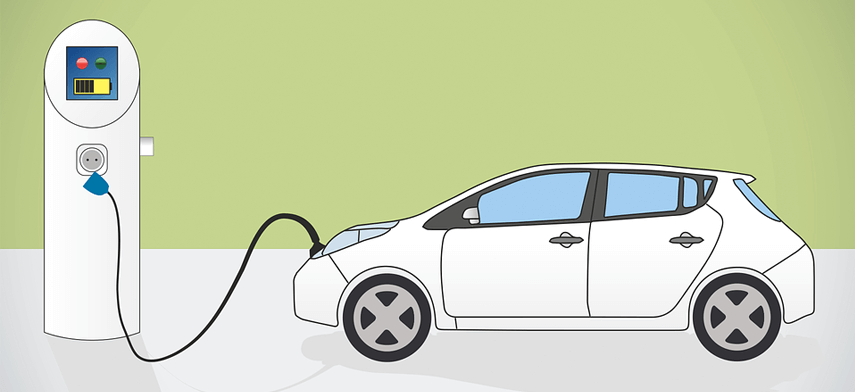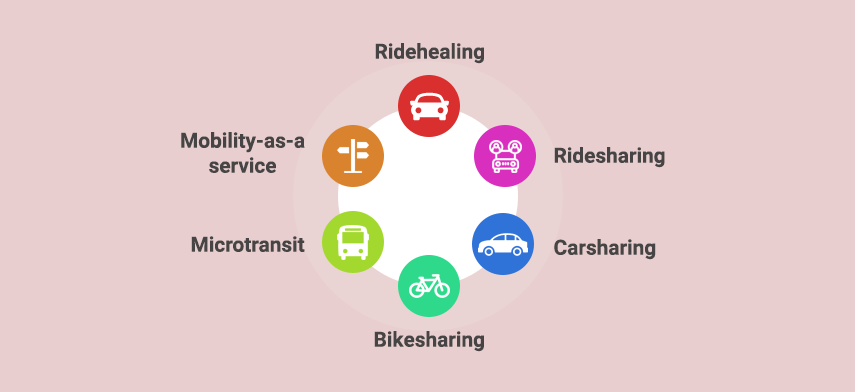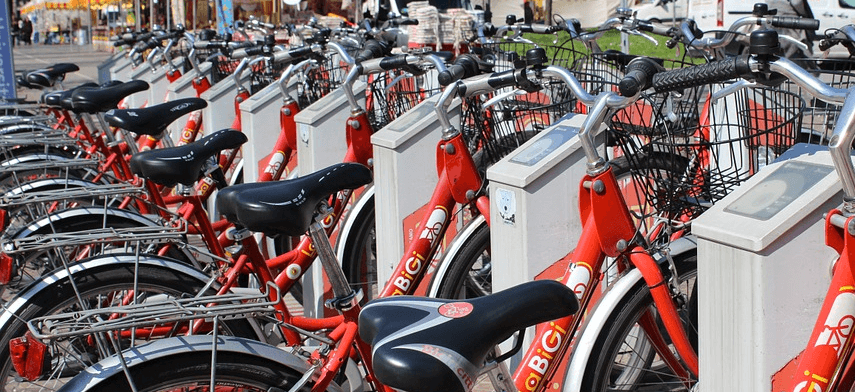Shared mobility refers to transportation services and other resources which are shared by multiple users. They are either used at the same time or in a fixed order. For example, all kinds of public transit represent shared mobility. Whether it be taxis, rented cars, bike sharing, car sharing, ride sharing, ride-sourcing or side-splitting, shared mobility is paving the way for the future. Shuttle services along with “micro transit” are becoming more popular with each day.
Shared mobility trends show that the popularity of shared mobility is constantly on the rise. However, it will not reverse global vehicle sales. It might lead to lesser car sales and slow the process down. With shared mobility becoming the norm, it is likely that we will see lesser personal vehicles on the road. By 2030, around a third of the expected rise in vehicle sales caused by urbanization and macroeconomic growth will not take place because of the prevalence of shared mobility.
More Environmental Friendly Than You Think

However, shared-mobility is not bad for the industry if we look at the bigger picture. We need to take into consideration how it can prove to be advantageous for some causes. Automakers, suppliers, and automobile brands will have to capitalize on this development and make the best of it if they want to survive. The renewed interest in providing solutions for environmental and economic concerns has led to the urgency of finding sustainable alternatives. That is where shared mobility comes in because it can help preserve energy, cost less money and also save the environment all at the same time.
It’s a More Mobile World
The shared mobility market is thriving, and we should be happy as it will help protect us in the future. Advancements in the field of electronic and wireless technologies have made carpool app development much easier. Automobile manufacturers, venture-backed startups, city programs, and even rental car companies are coming up with better solutions to use the shared mobility trends to their advantages.
The evolution of large physical networks and the development of mobile applications that can multitask have changed the way we see transportation. We are now able to alter routes, book empty seats, get fare media estimation, and even receive real-time arrival and departure information.
The new services that are available to us present us with numerous options as to how we handle our daily transit.
- We get more mobility choices to choose from, which make the process more efficient.
- We have access to last mile and first mile solutions.
- Shared mobility can reduce traffic congestion because it takes only the shortest routes.
- With the help of shared mobility, we will be able to reduce different kinds of pollution.
- Shared mobility can drastically reduce our transportation costs.
- Our journeys are much more efficient.
- Shared mobility helps to provide multiple choices to people who are unable to buy and maintain their own car.
- It also creates more accessible mobility options for people who have limited physical ability.
Types Of Shared Mobility Services:

There is no single type of shared mobility service that you will have to use if you want to become a part of the community. You can choose a shared mobility service that seems convenient to you based on your requirements. Different kinds of shared mobility services are cropping up in the market every day.
- Bike Sharing / Scooter Sharing:
Bike Sharing programs began with a 1965 initiative that took place in Amsterdam, Netherlands. It was a free-bike system and was followed by the second-generation programs which were also called coin-deposit systems. The third generation programs are technology-based and much easier to use. Bikesharing has flourished in China, Italy, and the United States.
- Car Sharing:
Car sharing first began in Zurich, Switzerland and today it has become a worldwide phenomenon. Car sharing had a rapid geographic expansion in the 2000s. There was a significant rise in the membership, which led to the system becoming so popular today. As things stand, Europe is one of the biggest car-sharing markets in the world. North America saw the evolution of car-sharing services in three phases, namely the initial market entry which was also the experimentation period, the growth and market diversification and the mainstream commercialization. Car sharing is no longer limited to just urban areas. It is finding a foothold in larger areas and capturing the attention of people from all communities.
- Ride-hailing:
Ride-hailing became popular in the latter half of the 2000s. They have expanded rapidly not only within the United States but also to other continents. For example, Uber is one of the biggest businesses in the transportation industry now. The number of users is only going up with each year as people are discovering the convenience of booking a ride with the help of an app anywhere, anytime.
- Public Transit:
If you want to travel in public transit, then you can take advantage of the big fleets of buses, trains and other facilities which will take you from place to place at an affordable rate. They follow a fixed route, which means that you are the one who has to locate the right public transport for your destination. Tech groups are working on integration platforms which will allow better coordination of public vehicles.
- Microtransit / Shuttles:
Microtransit is one of a kind service model that can be placed somewhere in between traditional fixed-route transit and ridesharing/ride-hailing services provided by companies now. The system is demand-responsive, which means that it is commuter-focused and uses their pickup and drop-off points to map the perfect route.
These shared mode vehicles are not as big as transit vehicles. What makes micro transit so important is that it is extremely flexible when it comes to creating routes and locating the perfect stops.
The shared mobility industry has also seen the rise of Shared Autonomous Vehicles.
Potential Growth of Shared Mobility market:

Today, it’s about finding out how shared ability trends will make an impact on the future. Shared mobility isn’t the only answer we should be looking for - as research suggests it can only lead to a partial reduction in car ownership.
A 2017 McKinsey survey , for instance, talks about how as many as 67% of U.S. respondents stated that they preferred to drive their own cars than look for mobility options. It’s a worrying trend, given that 63% of them stated that they wouldn’t use their vehicles for shared mobility, even if they get free rides.
The shared-mobility industry trends show that some of the emerging companies in shared mobility are already taking over larger automakers when it comes to market valuations. This suggests that shared mobility has strong investor support.
Countries in Europe, as well as China and the United States, are perhaps the major drivers who will determine the direction which shared mobility will take. The shared-mobility market in these regions has shown excellent annual growth rates in the past and is expected to do so in the future as well.
The most positive scenario will see customers demanding more self-driving taxis or shuttles, which will take them from one place to another. The market, in that case, will be likely to see a 28 percent annual growth in between the years 2015 and 2030. In case the demand is average, the shared mobility market will still see steady growth because of the convenience and economics of the matter. At the moment, China and the United States have the two largest markets related to shared mobility. Both markets are presided over by e-hailing players.
One thing that can hold the shared mobility industry back is the absence of a one-size-fits-all mobility model. Participants must organize market segmentations right at the city level to understand which direction the shared mobility trends are leaning.
Conclusion:
The current growth in mobility services is expected to usher in a bigger and long-term mobility evolution, which will transform the way we view transportation preferences. The process will become more closely associated with on-demand shared mobility and an elaborate multimodal system which would be not so car-centric. Users will become more open to the idea of using shared mobility services like public transit. We need to take this opportunity and make transportation more efficient so that our futures are secure. The overcrowding of cars on the roads has led to rampant widespread pollution, and we need to compensate. The affordability of shared mobile services makes it one of the best options available to use. The profound long term positive impact is worth the minor conveniences that we will face no when trying to adjust to shared mobility services.
Author's Bio

